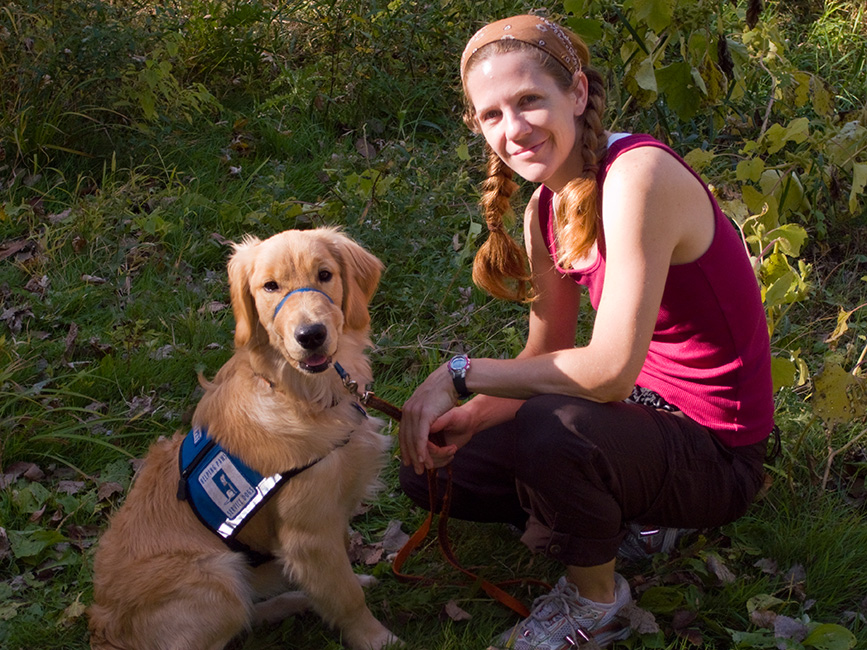Seva is 19 months old now. Her graduation is going to come up sooner than we think (between 2 and 2 1/2 years). At this point, she’s learned most of the skills she needs to be a service dog. The focus now is on consistency, duration, reducing food rewards, and linking commands into chains so that she can do more complex things. Oh, and minding her manners in public. That’s going to be tough!
We’ve been working on new skills, Rise–standing up on a wall–and Put–dropping an object into a bin, instead of Giving it to me. These are tough skills for a puppy. Recent additions to our homework have been to put together commands in a chain.
Now, Seva can do all sorts of command chains, like Get It, Bring, Give. Get Dressed, Rest Your Head. Rise, Snuggle. Those command chains are natural and intuitive. I didn’t think she was ready for a chain with Rise or Put in it, until Sunday.
I had her Rise (we practice with a board to save our walls), and thought, “What the heck.” I grabbed her light switch and gave the next command in the chain: Light. She did it! Camera time:
Rise-Light
And if she could do Rise-Light, why not Rise-Put? I tried. She succeeded. I grabbed my phone again. It was propped up on the counter, so forgive the framing. You’ll see in the second go that Seva tries to quit halfway. She puts her chin on her crate like, “Come on, Mom. That’s good enough.” Typical teenager!
Get It-Rise-Put


